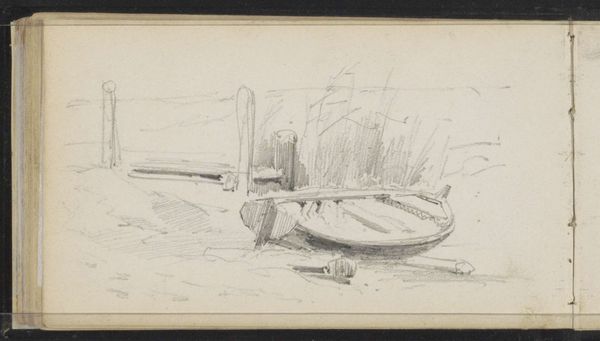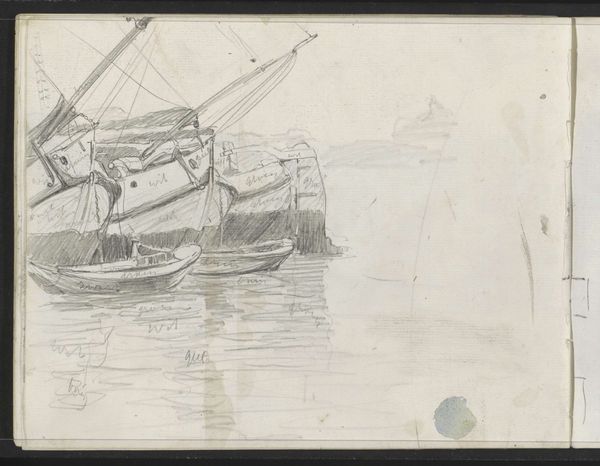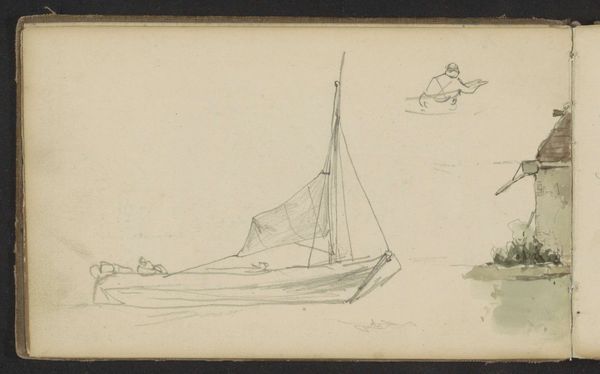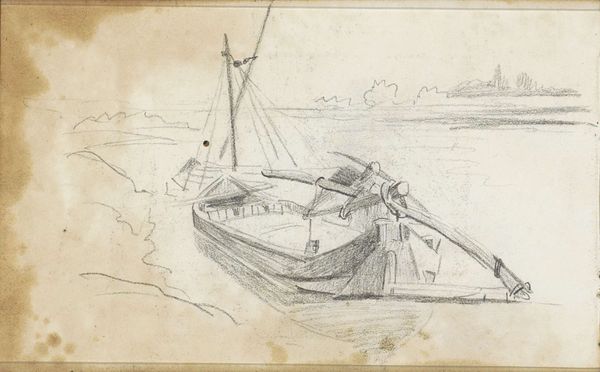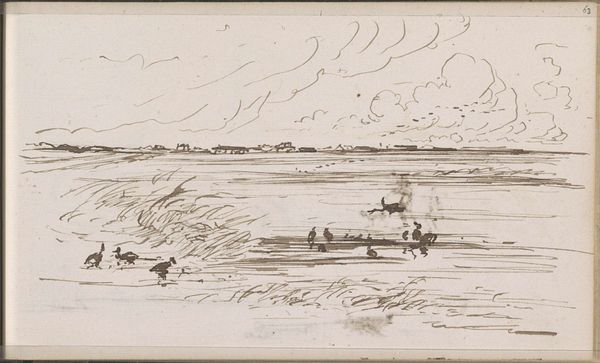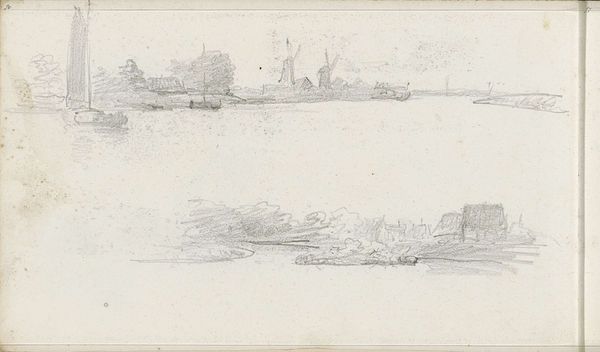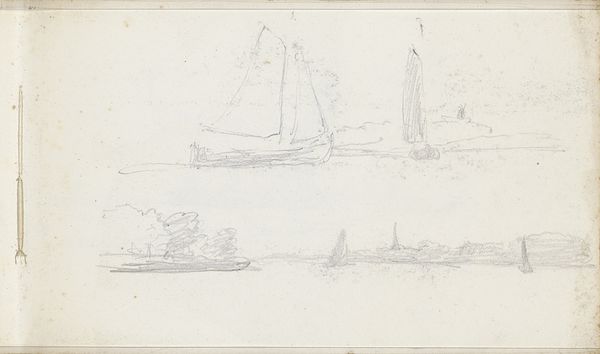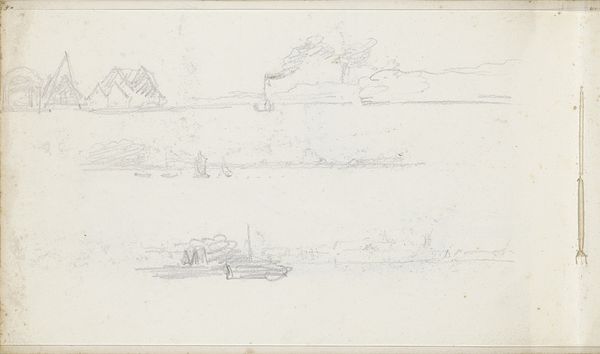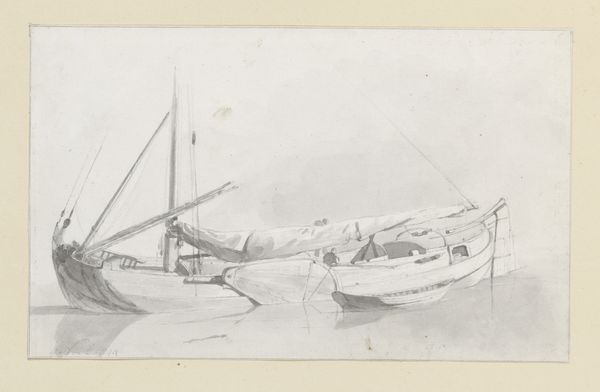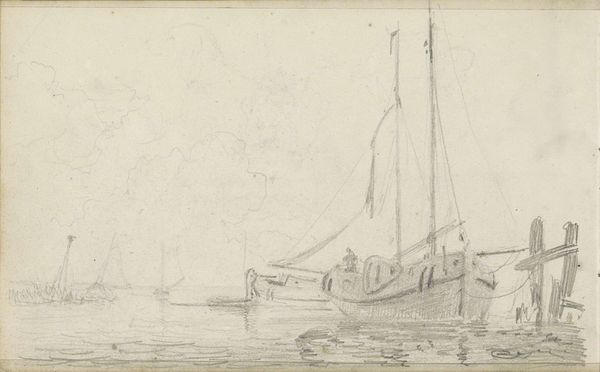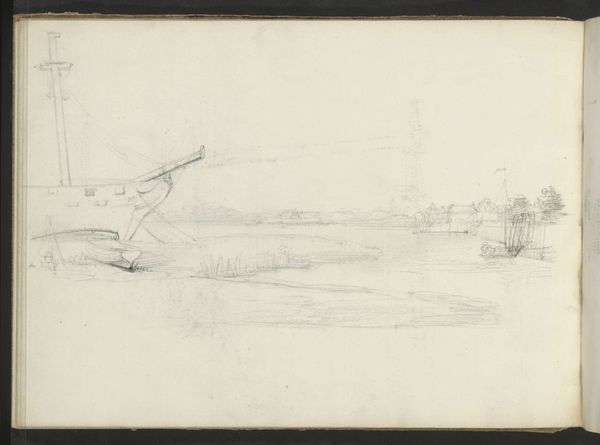
drawing, pencil
#
drawing
#
landscape
#
pencil
#
realism
Copyright: Rijks Museum: Open Domain
Curator: Before us, we have "Landscape with Moored Rowboats on a Waterfront" by Matthijs Maris, likely created between 1849 and 1917. It’s currently held at the Rijksmuseum. Editor: It has an almost ghostly feel, doesn’t it? The delicate pencil strokes barely there on the paper, the scene so quiet and still. Curator: Absolutely. Considering Maris's work often delved into the melancholic and explored themes of isolation, this subdued quality feels deliberate. He was working within the social fabric of the late 19th century. The piece reflects the industrial shift of the time and Maris's perception of a loss of the idyllic. Editor: I’m more drawn to the pure physicality of it. Look at how simply he’s rendered these boats, mere lines suggesting form and volume. It highlights the labor and necessity ingrained in human relationship with water, which provided transportation and livelihood for the time. Curator: That’s true. Maris was really committed to portraying the everyday reality. Also consider the gendered dynamics of work at that time; who might have used these boats, and what power structures they reveal in society. Editor: I suppose that's there as well. And I'm reminded that Maris’ use of a relatively accessible and modest material such as pencil, opens a window onto artistic production costs. I’d love to explore how this landscape resonates against the backdrop of the industrial labor happening simultaneously inland. Curator: Thinking about class, you’re correct. This drawing provides a glimpse of working peoples' engagement with these resources, the access and means of transportation they could harness or be kept away from in their daily lives. Editor: It offers us a quiet perspective now, especially as these boats are antiquated. It invites consideration to more sustainable modes of water-work or recreation. Curator: Ultimately, seeing the scene through his particular lens helps us consider our present moment with added layers of societal reflection. Editor: Yes, examining these vessels tells something new about a time not forgotten and also challenges assumptions and perspectives of working life and production now.
Comments
No comments
Be the first to comment and join the conversation on the ultimate creative platform.

